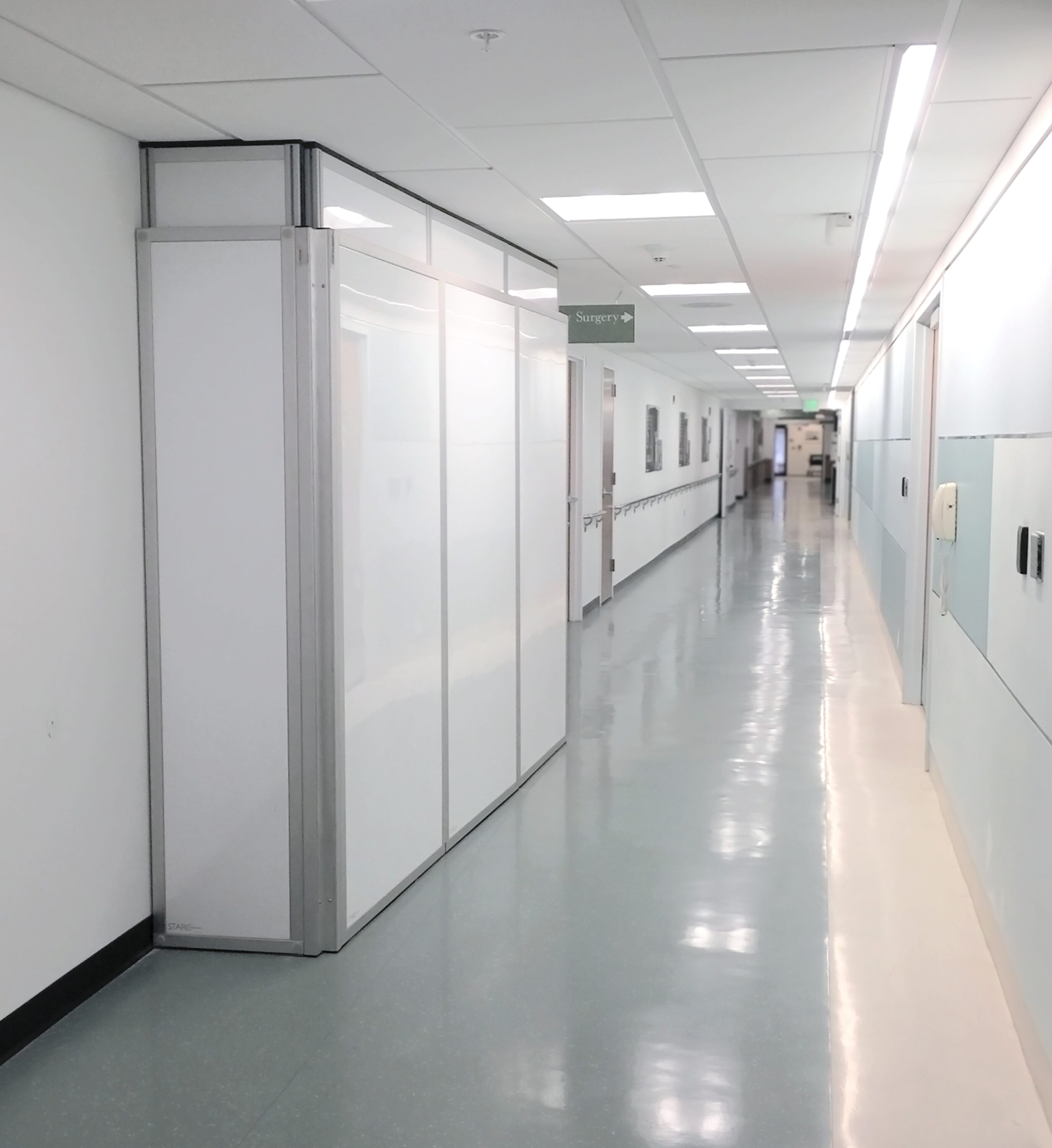
When it comes to temporary wall systems, the stakes are higher than aesthetics or cost-efficiency. In specialized environments like healthcare facilities, laboratories, and data centers, the temporary construction walls you choose can significantly impact air quality.
Temporary Wall Systems for General-Purpose Environments
In areas where air quality is not a critical concern, temporary walls offer a better alternative to drywall or plastic barriers. Modular systems not only conceal construction activities but also enhance workflow efficiency.
Key Considerations for General-Purpose Settings
- Reusability to minimize waste
- Use of recycled materials
- Convenient additional features for ease of use
Temporary Walls for Specialized Environments
Settings like hospitals, clean rooms, and data centers demand more stringent requirements. The temporary wall system used must effectively control even microscopic contaminants.
Key Considerations for Specialized Settings
- Effective particulate control
- Antimicrobial surfaces for added safety
- Compliance with ISO standards
- Integrated airflow systems for better air quality
- Compatibility with HEPA filters
Temporary Wall Systems for Critical Environments
In healthcare settings, particularly patient care areas, there is zero margin for error. Temporary construction walls must be designed to protect against both particulate and microbial contamination.
Key Considerations for Healthcare Environments
- Efficient dust and germ control
- Negative air pressure capabilities for safer conditions
- Adherence to patient safety protocols
- Compliance with ICRA and fire safety standards
- Ease of cleaning and disinfection
The Solution: Temporary Construction Walls
Achieving ICRA compliance is critical in healthcare environments, especially for ICRA Class V, which requires an anteroom along with Class IV criteria. For example, a recent healthcare renovation utilized our prefabricated temporary wall system, which exceeded standards for ICRA Class IV/V, fire safety, and negative air pressure. The result? Zero contamination incidents, ensuring patient and staff safety.
Conclusion: Choosing the Right Temporary Wall System
Selecting the right temporary wall system requires a deep understanding of the environment’s specific needs. By prioritizing safe, efficient, and innovative solutions, you can meet or exceed your client’s expectations.
By following these guidelines and customizing the approach for each project, Project Managers, Facilities Managers, and contractors can set higher standards for commercial construction.
For more details on choosing the right temporary walls for your project, download our Definitive Guide to Prefabricated Modular Walls.
